토모코 키쿠치 Tomoko KIKUCHI
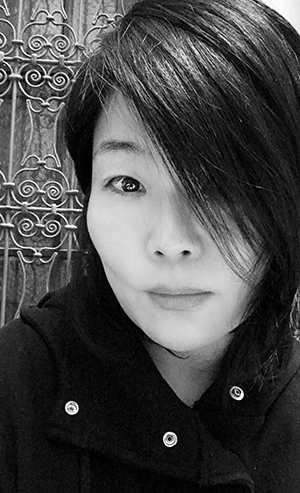 Based in Beijing, Tomoko KIKUCHI’s phothgraphy, video, and video installation works examining the themes such as gender, social changes and war, focus on the people who live in cracks of a dynamically transforming society. For example I and I (2005-2013), Lost Boundaries (2012) are the photographic and video works about young Chinese LGBT people who wander about the unclear boundaries separating men and women, where big changes are occurring in the sexuality in urban youth In every project she has been involved with their community fellowship for a long period of time. these works visualize the energy of crashes out of conflicts, and the human power to overcome the contradiction and complexity of the world.
Based in Beijing, Tomoko KIKUCHI’s phothgraphy, video, and video installation works examining the themes such as gender, social changes and war, focus on the people who live in cracks of a dynamically transforming society. For example I and I (2005-2013), Lost Boundaries (2012) are the photographic and video works about young Chinese LGBT people who wander about the unclear boundaries separating men and women, where big changes are occurring in the sexuality in urban youth In every project she has been involved with their community fellowship for a long period of time. these works visualize the energy of crashes out of conflicts, and the human power to overcome the contradiction and complexity of the world.
베이징에서 활동하는 토모코 키쿠치의 사진, 비디오, 영상 설치 작업은 역동적으로 변화하는 사회의 틈에 살고 있는 사람들을 중심으로 젠더, 사회 변화, 전쟁 등의 주제를 살핀다. 예를 들어, <나와 나(I and I)>(2005-2013), <잃어버린 경계들(Lost Boundaries)>(2012)은 남성과 여성을 구분 짓는 불명확한 경계, 곧 도시 청년들의 성 정체성에 큰 변화가 일어나고 있는 그 경계에서 헤매는 중국의 LGBT 청년들에 대한 사진과 영상 작업이다. 작가는 프로젝트마다 그들의 공동체 속에서 오랜 기간 우정을 쌓아왔다. 이 작업들은 충돌에서 나오는 충격 에너지와, 세상의 모순과 복잡성을 극복하기 위한 인간의 능력을 시각화 한다.
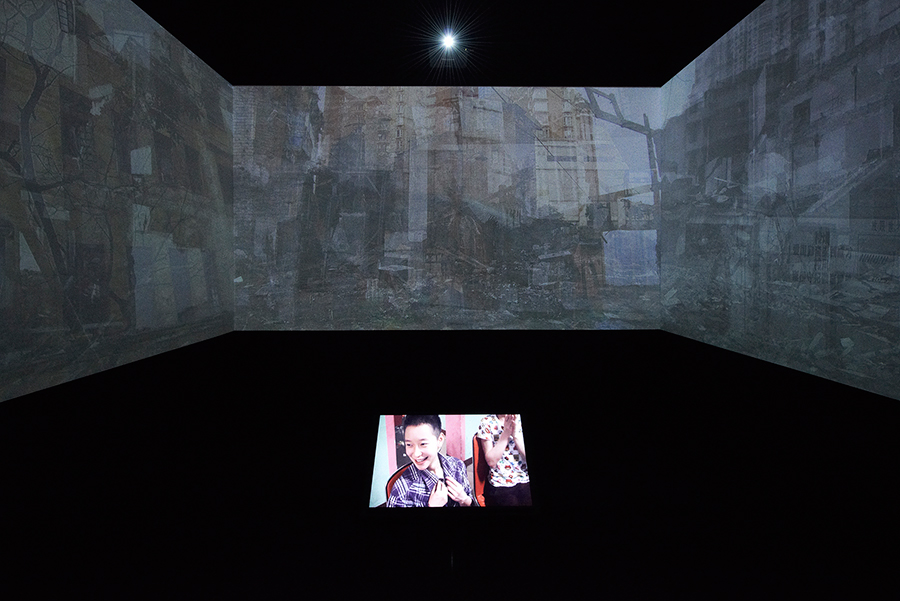 Exhibition view of Go-Betweens: The World Seen Through Children, 2014
Exhibition view of Go-Betweens: The World Seen Through Children, 2014
Lost Boundaries (잃어버린 경계들) & Wounded (상처 입은), Video installation, color, 2014
# Q&A
Q. Introduce your work in general and the process of creation/production.
A. Based in Beijing, my works examine themes such as gender, social change and war and focuses on the people who live in cracks of a dynamically transforming society. For example I and I (2005- present) and Lost Boundaries (2012) are photographic and video works about young Chinese LGBT individuals who wander about the unclear boundaries that separate men and women, and takes place where big changes are occurring in the sexuality in urban youth. The River (2013) is a photographic work about the life and death of contemporary society through the changes within the lives of fisherman living in the world’s biggest and longest rivers. Through these works I try to visualize the energy of the crashes that form from conflicts, and the human power to overcome the contradiction and complexity of the world.
I spend a long time researching, but when I start to shoot I try to forget all research because I do not want to be closed off by my research. In each project I include the community in which I have been engaging with for a long period of time. I sometimes live with the subjects and try to continue working with them until I change my values. When I can see the world in a completely different way from before, the work is almost done. It usually takes a long time until my values have been overturned several times, then the work is going to take shape.
Q. 창작의 관심사와 내용, 제작 과정에 대하여
A. 나는 베이징에 기반을 두고 활동하며 젠더, 사회 변화, 전쟁과 같은 주제를 탐구하며, 역동적으로 변화하는 사회의 틈새에 살고 있는 사람들에게 주목하는 작업을 진행하고 있다. 예를 들어, 도시 청년들이 경험하는 섹슈얼리티와 관련한 큰 변화를 다룬 《나와 나》(2005-현재)와 《잃어버린 경계》(2002)는 여자와 남자를 구분하는 불확실한 경계에서 방황하는 중국의 젊은 LGBT 층을 담은 사진과 영상 작업이다. 또한, 《강》(2013)은 세계에서 가장 크고 긴 강 주변에 사는 어부의 삶이 변화하는 것을 통해 현대 사회의 삶과 죽음을 그린 사진 작업이다. 이 작업들을 통해 갈등이 유발하는 충돌의 에너지 그리고 세상의 모순과 복잡성을 극복하는 인간의 힘을 시각화하고자 한다.
나는 리서치를 하는 데에 많은 시간을 보내지만, 막상 촬영을 시작하면 조사한 것을 다 잊어버린다. 리서치에 국한되고 싶지 않기 때문이다. 각각의 프로젝트를 진행하며 특정한 공동체와 오랜 시간 만남을 이어오고 있다. 때로는 작업의 대상이 되는 인물들과 함께 살면서 내 가치관이 변할 때까지 작업을 이어가기도 한다. 특히, 이전과 완전히 다른 시각으로 세상을 보게 될 때, 비로소 나의 작품이 완성된다. 내가 믿는 가치가 오랜 시간 동안 여러 차례 뒤집히고, 그 후에 작업의 윤곽이 드러난다.
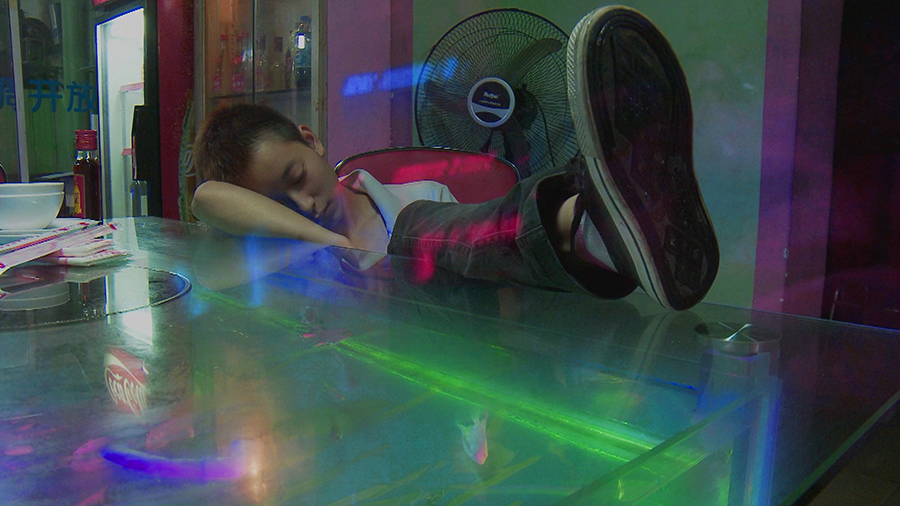 Lost Boundaries, 7min, video installation, 2012
Lost Boundaries, 7min, video installation, 2012
Q. What is your representative work/exhibition? And why do you think so?
A. I and I is a photographic series that witnesses rapid changes in China’s society and social awareness through the lives of transgender people. This project visualizes their energy and power to overcome the pressure not only from society and family but also from themselves. From 2005 to 2013, when I was involved in this project, it was the turning point in the awareness of Chinese people in regards to gender. I and I portrays Chinese transgender people, from the dark days when they lived an underground existence, to when they began to discern a gleam of light, to depicting the conflicts and spirits that exist between their ideals and reality.
I think this project changed my previous working style and builds up to the current working style in which I am involved in the subjects and observe the world surrounding them over a long period of time. I think from this project I learnt to manage to see the relationships between the subjects and world from wider perspectives and angles.
Q. 자신이 생각하는 대표 작업(또는 전시)은 무엇이고 이 이유는 무엇인가?
A. 나의 대표적인 작업으로는 《나와 나》를 이야기 할 수 있다. 이 작업은 트렌스젠더의 삶을 통해 중국 사회의 급격한 변화와 사람들의 인식을 담은 사진 연작이다. 이 작업은 사회와 가족뿐만 아니라 자기 자신으로부터 받는 중압감을 극복하는 이들의 에너지와 힘을 시각화하고 있다. 내가 이 프로젝트를 진행했던 2005년부터 2013년은 중국인들의 젠더 인식과 관련하여 전환점과 같은 시기였다. 《나와 나》는 중국의 트랜스젠더들이 지하에서 생활하는 존재였던 어두운 시절부터 한 줄기 빛을 보기 시작하던 시기까지, 그들의 이상과 현실 사이에 존재하는 갈등과 정신을 묘사한다.
이 프로젝트를 통해 작업 스타일이 변했고, 대상에 관여하여 그들을 둘러싼 세계를 오랜 시간 동안 관찰하는 현재의 작업 스타일이 구축되었다고 생각한다. 이 프로젝트를 통해 대상과 세계의 관계를 더 넓은 시각과 각도에서 볼 수 있었다고 생각한다.
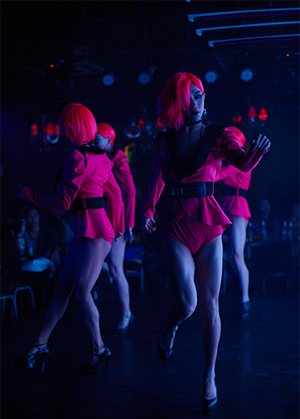 |
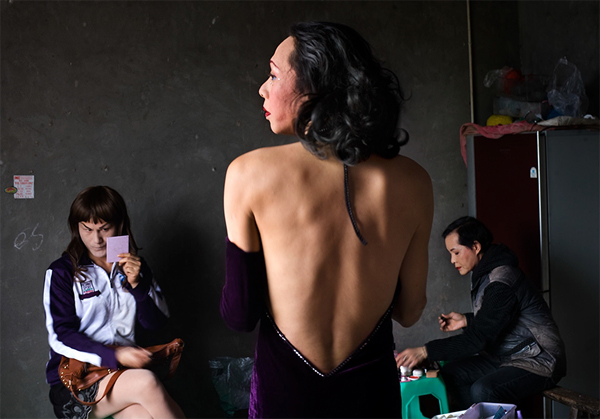 |
|
| I and I photography series, 2005-2013 | ||
Q. What is the inspiration, motivation, moment of your work?
A. My inspirations mostly come from people who I meet by coincidence or places where I was very strongly attracted without reason. In the beginning I usually have no intension to produce work with them but eventually the stronger and the more powerful their attraction are the more I involve in. It becomes a piece of work when my inner self resonates with the subject.
For some reason, the people and places that are strongly attracted to me, I realize later on, have a strong relationship with my own inner issues and also the issues with myself and this world.
Q. 작업의 영감, 계기, 에피소드에 관하여
A. 주로 우연히 만난 사람들이나 이유 없이 강하게 매료된 장소에서 영감을 얻는다. 처음 의도는 작업을 만들기 위함이 아니었지만, 그 사람들이나 장소가 지닌 매력이 강하거나 더 클수록 더욱 관여하게 된다. 나의 내적인 자아가 그 대상을 상기시킬 때, 그것은 작품의 일부분이 된다.
어떤 이유에서 인지 내가 강하게 끌리는 사람과 장소는 나의 내적인 문제 또는 나와 세계의 문제와 강한 연결고리를 가지고 있다는 것을 나중에 깨닫게 된다.
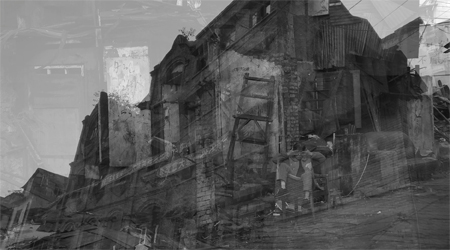 |
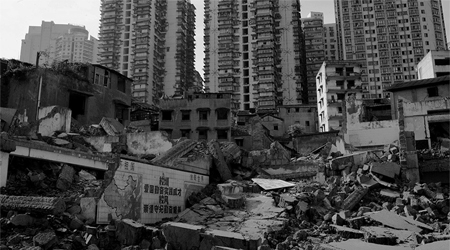 |
|
| Lost Boundaries, 7min, video installation, 2014 | ||
Q. How do you think about communication between art and spectators?
A. I don’t think the work is completed when the artist has finished producing it, but after the audience sees it, receives emotions and thinking from it. And then I think it’s completed.
So I assume that communication between artists and their audiences is based on the artists’ deep thinking which can transcend time and space for wider audiences of different strata, generations, and different places.
Q. 예술, 그리고 관객과의 소통에 대하여
A. 작품은 작가가 작업을 끝냈을 때 완성되는 것이 아니다. 나는 관객이 작품을 보고 얻는 수많은 감정과 생각이 작품을 완성시킬 수 있다고 생각한다. 소통을 위해서는 시간이나 공간을 초월하는 작가의 사려 깊은 사고가 필요하며, 이를 바탕으로 서로 다른 계층 또는 세대에 속하거나, 매우 다른 환경에서 살아갈 관객을 고려할 수 있을 것이라 생각한다.
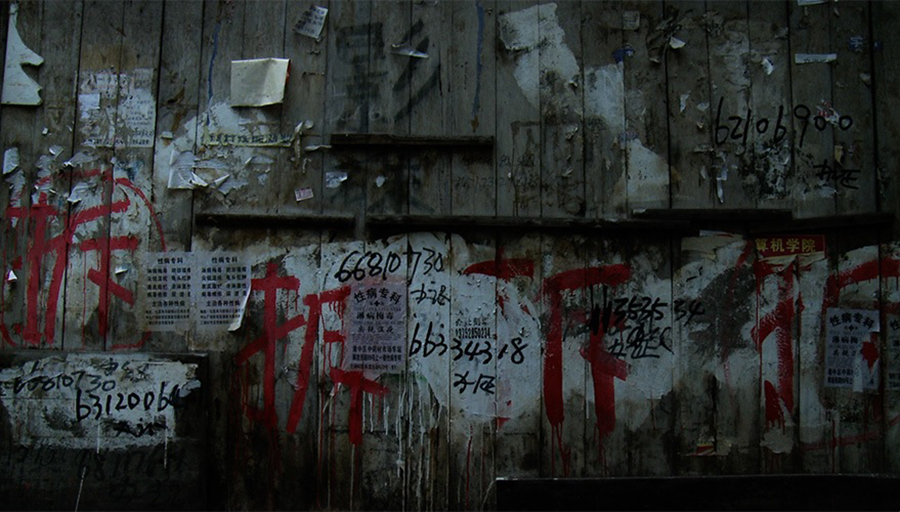 Lost Boundaries, 7min, video installation, 2014
Lost Boundaries, 7min, video installation, 2014
Q. Your wishes as an artist./ Your long-term plans./ Your goals and concerns, etc.
A. I will continue the project Dialogue which I’ve been currently working. This is a project that takes place in Japan, South Korea and China. This photography and video installation work aims at evoking conversations of people who are both perpetrators and victims of historical and current issues in these three different countries. Through this project I try to transcend the border, time and space to consider the essence of human nature.
Q. 앞으로의 작업 방향과 계획에 대하여
A. 나는 현재 일본과 한국 그리고 중국에서 진행 중인 《대화》 프로젝트를 계속해서 이어갈 것이다. 이 사진 및 영상 설치 프로젝트는 서로 다른 세 나라의 역사 및 동시대 문제에 대해, 가해자와 피해자 모두를 대화에 참여시키는 것을 목적으로 한다. 나는 이 프로젝트를 통해 국경, 시대, 공간을 초월하여 인간 본성의 본질을 생각해보고자 한다.
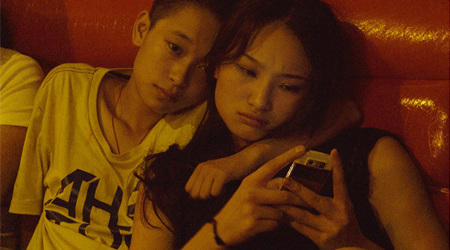 |
 |
|
| Lost Boundaries, 7min, video installation, 2012 | ||
작가정보 : www.kikuchitomoko.com